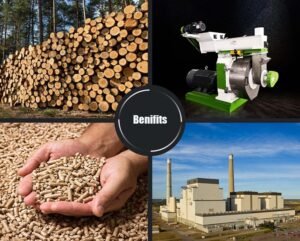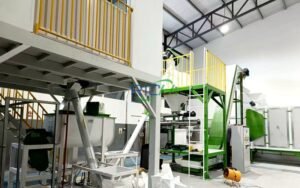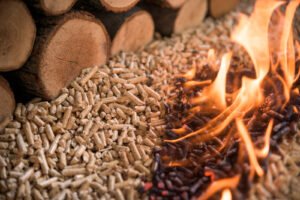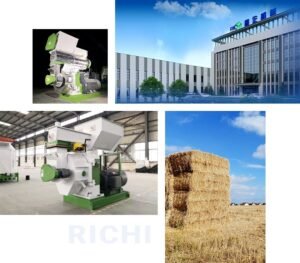
Shrimp feed pellet machines play a crucial role in the aquaculture industry, particularly in shrimp farming. These machines are designed to produce high-quality feed pellets that meet the nutritional requirements of various shrimp species at different growth stages.
As the demand for shrimp feed continues to grow, manufacturers have developed several types of shrimp feed pellet machines to cater to different production needs and scales. This article explores the main types of shrimp feed pellet machines available in the market.
- Ring Die Pellet Mill
The ring die pellet mill is one of the most common types of shrimp feed pellet machines. It consists of a rotating ring die and stationary rollers. The feed mixture is pressed through the holes in the ring die by the rollers, forming cylindrical pellets.Key features:
- High production capacity
- Suitable for large-scale production
- Can handle a wide range of ingredients
- Produces dense, sinking pellets ideal for shrimp
Advantages:
- Cost-effective for high-volume production
- Consistent pellet quality
- Durable and long-lasting
Disadvantages:
- May require more power compared to other types
- Limited flexibility in pellet size adjustment
- Flat Die Pellet Mill
The flat die pellet mill uses a stationary flat die and rotating rollers to press the feed mixture through the die holes. This type of machine is often used for smaller-scale production or specialized feed formulations.Key features:
- Compact design
- Suitable for small to medium-scale production
- Easy to maintain and clean
Advantages:
- Lower initial investment cost
- Easy die replacement
- Good for producing smaller batches of specialized feed
Disadvantages:
- Lower production capacity compared to ring die mills
- May produce less dense pellets
- Extruder Pellet Machine
Extruder pellet machines use a screw mechanism to force the feed mixture through a die under high pressure and temperature. This process allows for better starch gelatinization and protein denaturation, resulting in highly digestible pellets.Key features:
- Can produce floating, slow-sinking, or sinking pellets
- Excellent control over pellet density and expansion
- Suitable for high-fat formulations
Advantages:
- Produces highly water-stable pellets
- Can incorporate higher levels of fat in the feed
- Improves digestibility of feed ingredients
Disadvantages:
- Higher initial investment cost
- May require more energy to operate
- More complex operation and maintenance
- Wet Type Pellet Machine
Wet type pellet machines are designed to handle feed mixtures with higher moisture content. They are particularly useful for producing shrimp feed pellets that require excellent water stability.Key features:
- Can process feed mixtures with up to 65% moisture content
- Produces dense, water-stable pellets
- Often used in combination with a dryer
Advantages:
- Excellent for producing high-quality, water-stable shrimp feed
- Can incorporate liquid ingredients more effectively
- Reduces dust during production
Disadvantages:
- Requires a drying step after pelleting
- Higher energy consumption due to drying process
- More complex production line setup
- Dry Type Pellet Machine
Dry type pellet machines are designed to process feed mixtures with lower moisture content. They are simpler in design and operation compared to wet type machines.Key features:
- Processes feed mixtures with 10-13% moisture content
- Simpler design and operation
- Often used for smaller-scale production
Advantages:
- Lower initial investment cost
- Simpler production process
- Lower energy consumption
Disadvantages:
- Limited ability to produce highly water-stable pellets
- May not be suitable for all shrimp feed formulations
- Vertical Pellet Mill
Vertical pellet mills have a unique design where the die and rollers are arranged vertically. This configuration can offer some advantages in terms of space efficiency and gravity-assisted material flow.Key features:
- Compact, vertical design
- Gravity-assisted material flow
- Suitable for medium-scale production
Advantages:
- Space-efficient design
- Good for producing medium-hard pellets
- Easy maintenance due to vertical configuration
Disadvantages:
- May have limitations in processing certain ingredients
- Not as common as horizontal configurations
- Organic Fertilizer Pellet Machine (Adapted for Shrimp Feed)
Some manufacturers have adapted organic fertilizer pellet machines for shrimp feed production. These machines are designed to handle a wide range of organic materials and can be suitable for producing shrimp feed pellets with high organic content.Key features:
- Can handle a wide range of organic materials
- Robust design for processing fibrous ingredients
- Often includes a pre-conditioning step
Advantages:
- Versatile in handling different ingredient types
- Good for producing organic or specialty shrimp feeds
- Can process ingredients with varying moisture contents
Disadvantages:
- May require additional modifications for optimal shrimp feed production
- Not specifically designed for aquafeed, which may affect pellet quality
Choosing the Right Shrimp Feed Pellet MachineWhen selecting a shrimp feed pellet machine, consider the following factors:
- Production capacity requirements
- Types of shrimp feed formulations to be produced
- Desired pellet characteristics (size, density, water stability)
- Available space and infrastructure
- Budget constraints
- Energy efficiency and operational costs
- Ease of maintenance and availability of spare parts
- Flexibility to produce different types of aquatic feeds
Conclusion
The choice of shrimp feed pellet machine depends on various factors, including production scale, feed formulation, desired pellet characteristics, and budget. Ring die and flat die pellet mills are popular choices for their reliability and cost-effectiveness. Extruder pellet machines offer superior control over pellet characteristics and can produce highly water-stable pellets. Wet type pellet machines are excellent for producing high-quality shrimp feed but require a more complex setup.
As the aquaculture industry continues to evolve, manufacturers are constantly innovating to improve shrimp feed pellet machines. Future developments may include more energy-efficient designs, improved control systems for precise pellet formation, and machines capable of handling a wider range of sustainable ingredients.
Ultimately, the best type of shrimp feed pellet machine for a particular operation will depend on its specific requirements and constraints. By carefully evaluating the options and considering long-term operational needs, shrimp feed producers can select the most suitable machine to ensure the production of high-quality feed pellets that support optimal shrimp growth and farm profitability.






